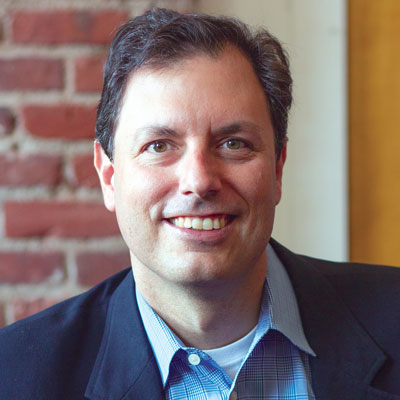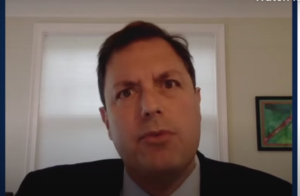
Workforce challenges that have plagued long-term care operators during the coronavirus pandemic will get worse as the crisis further progresses this year, one of the nation’s top health policy analysts said Tuesday.
“The amount of fatigue that the direct caregivers are feeling right now is going to begin to manifest itself in individuals leaving the workforce, choosing a different profession,” David Grabowski, health care policy professor at Harvard Medical School, told McKnight’s Long-Term Care News on Tuesday.
“Our direct caregivers haven’t been supported going back really to the beginning of the pandemic, in terms of either pay or personal protective equipment and testing. I think at some point they’re going to evaluate their options and just say, ‘We can’t do this anymore,’” he added. “We’re already seeing a lot of vacancies and workforce shortages.”
An ongoing shortage of workers could mean doom for nursing homes across the country. Staffing has been among the top concerns and expenses for operators during COVID-19’s time, a survey by the American Health Care Association/National Center for Assisted Living revealed in August.
Multiple studies have also linked quality of staffing to how well nursing homes fare with COVID-19. A University of Chicago analysis found that facilities with more nurse aide hours and training had lower odds of experiencing a coronavirus outbreak and fewer deaths. Grabowski added that Harvard research has suggested that about one in five facilities nationwide are reporting severe shortages of workers.
“I actually think going forward it may get much worse, especially going into the fall if we see another surge. I think both existing workers are leaving the workforce but also potential workers that you might recruit (will stay away). We just haven’t been able to grow this workforce during the pandemic. It’s going to be really hard to recruit individuals into nursing home positions,” Grabowski explained.
“That’s what makes me most nervous. Because of all of these other problems that we’ve had — whether it’s PPE, testing, failure to pay our staff a living wage, failure to offer them sick leave and other benefits — now we’re in this position where we haven’t invested in them and they’re simply going to leave the workforce,” he added.

remotely before a congressional
subcommittee in June.
Medicaid rerouting a key
A LeadingAge analysis released last week found that raising direct workers’ pay to a living wage would increase most of their wages by an average of 15.5%. The analysis also noted that benefits for adopting a living wage would also extend to operators, who would see reduced turnover and increased worker productivity. Grabowski was one of several industry stakeholders who advocated for the change.
He explained Tuesday that Medicaid funding is a large driver in the amount nursing home and home care providers can pay workers. Change is needed by top decision-makers, who can designate more Medicaid funding specifically for workers.
“There’s different ways that Medicaid can do this. It’s not just paying a higher rate but actually earmarking those dollars for direct caregiver wages,” Grabowski explained.
He added that he is not in favor of “putting dollars in the pockets of CEOs or private equity groups” but rather “putting dollars in the pockets of those direct caregivers.”
“The key to me is you can’t just mandate that nursing homes pay their staff a particular wage or have a minimum number of staff in the building. You really have to put Medicaid dollars behind that. This is one of the reasons that going forward we need to have some bigger payment reforms in long-term care, and nursing homes specifically. Our payment structure is one of those areas (that needs major reform),” Grabowski said.
PDPM is better
Today completes the first year under the new Patient Driven Payment Model, but because of the pandemic, it’s tough to fully evaluate the drastically new system, Grabowski noted. He noted that providers moved toward admitting higher-needs individuals, which could set them up relatively well in the future, even under pandemic conditions.
“Just to kind of connect the dots there, under this pandemic there’s good reason to want to encourage the admission of individuals with lots of care needs,” he explained. “Those are individuals with the coronavirus. PDPM actually could fit very well with the needs of a lot of these individuals with the virus. They’re going to have lots of comorbidities and lots of care needs.
“PDPM actually is a better model toward generating payment that actually pays a rate that’s commensurate with all the care needs of these individuals,” he added. “In any regards, this is a better model. It’s just really hard to (fully) evaluate.”
Much work to be done
Grabowski, who served on the Coronavirus Commission on Safety and Quality in Nursing Homes, said he hasn’t heard anything directly about major regulatory changes that can be expected due to the panel’s findings in the near future. He noted that the commission’s report outlined 10 themes and 27 recommendations that can improve the lives of residents and help providers.

He credited the Centers for Medicare & Medicaid Services and the Trump administration for acting on visitation and PPE concerns from providers, residents and family members. He’s hopeful that federal health officials will continue to use the report as a blueprint to address other challenges, as well.
“I think there’s a lot of work to be done in all 10 of those areas, from testing to PPE to cohorting, to workforce support — you name it,” Grabowski told McKnight’s. “I’m really glad they made that step (to enable more patient) visitation. I think it was a step. We’re not done with that issue and I hope that they’ll continue to make progress there.”
He added that he wants additional efforts in each domain acknowledged in the commission’s final report.
“There’s 100% a lot of work left to be completed,” Grabowski said.





